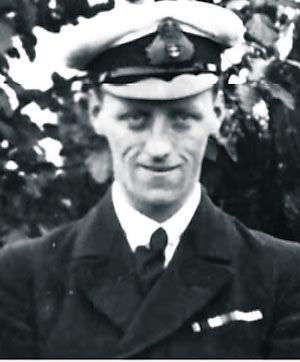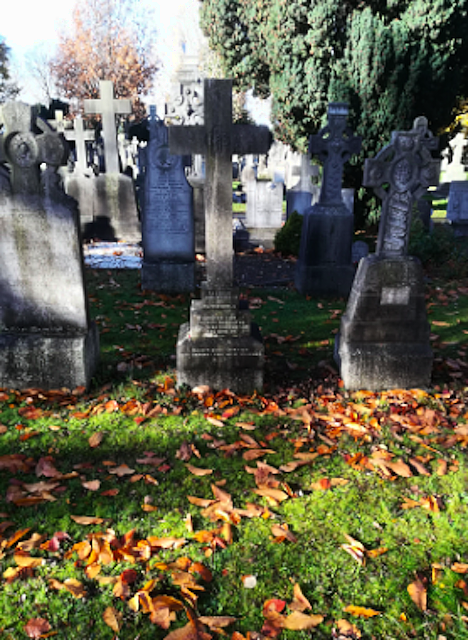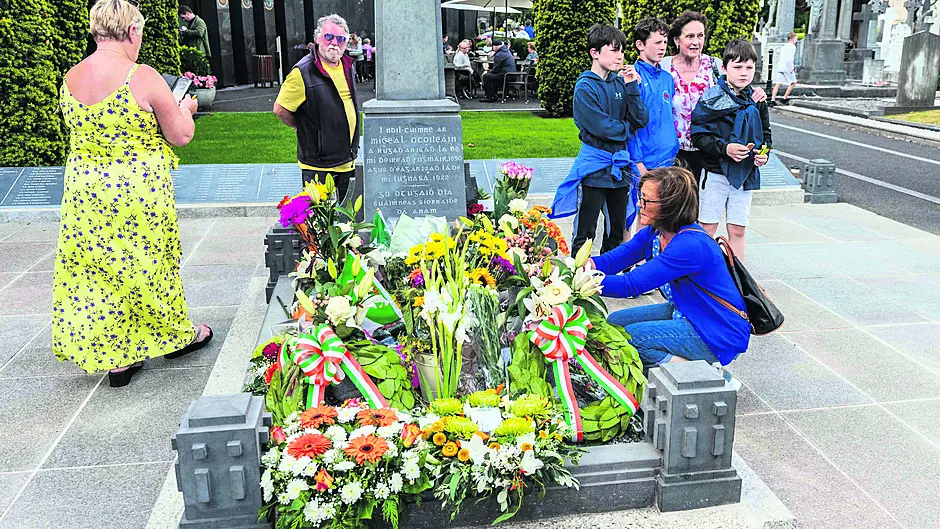Two prominent local men feature in a new book remembering those who died in the War of Independence and the Civil War, and they are connected by one thing – The Southern Star
BY ROBERT HUME
A FAMOUS Southern Star shareholder, as well as the co-founder’s son, both met violent deaths, just two years apart.
The huge publicity that accompanied last summer’s centenary of Michael Collins’s death exposed the awful circumstances surrounding the final moments of this revolutionary, soldier and politician.
When travelling in West Cork on August 22nd 1922, soon after negotiating what some saw as a shabby peace treaty with the British government, Collins was shot and killed during an ambush at Béal na Bláth, not too far from Woodfield, Clonakilty, where he was born in 1890.
‘He was lying there with a very gaping wound to the back of his head,’ recalled Emmet Dalton, who was travelling in the Collins convoy. ‘We lifted him … I bandaged the wound … I knew he was dying, if not already dead.’
The Southern Star, in which the Collins family owned shares, never doubted the integrity of the ‘Big Fella’, describing him as a ‘selfless patriot’ killed by ‘a misguided hand.’
On August 28th, thousands lined the streets as Collins’s cortège made its way to Glasnevin Cemetery, where, only 12 days before, he had attended the funeral of Arthur Griffith, founder of Sinn Féin. In the graveside oration, General Richard Mulcahy described Collins as a ‘hero and a legend’ who had toiled relentlessly for Ireland. His pristine grave is in the National Army plot.
 Phillip John O'Sullivan, the only son of Southern Star co-founder Florence O'Sullivan.
Phillip John O'Sullivan, the only son of Southern Star co-founder Florence O'Sullivan.
Less conspicuous is the grave of Philip John O’Sullivan, who was born in Kinsale in 1897. The only son of Margaret Barry and Florence O’Sullivan, co-founder of The Southern Star (1889), he died in equally shocking circumstances a week before Christmas 1920.
 Phillip John O'Sullivan's grave is only feet away from Michael Collins'.
Phillip John O'Sullivan's grave is only feet away from Michael Collins'.
Back home, after serving in the Royal Navy during the First World War, O’Sullivan qualified as a solicitor. In July 1920 he decided to join the Royal Irish Constabulary (the British police force in Ireland), where he was quickly promoted to district inspector. But his work as a crack decoder of secret messages soon brought him to the attention of IRA Intelligence, who decided to eliminate him.
On the evening of December 17th 1920, members of The Squad, a 12-man assassination unit (dubbed ‘The Twelve Apostles”) that had actually been set up by Michael Collins, followed him through Dublin, where he was to meet his fiancée, Alice Moore, at Nelson’s Pillar in Sackville Street. Alice recalled: ‘I was walking down Henry Street towards the Pillar and saw Phil coming towards me … he said something to me about hoping he was not late and I was pointing out that he wasn’t at all as I was early, when I heard the bang of a shot from my right and Phil fell down on his head.’
She had already noticed two men in the doorway of ‘Dowell’s’ (the jewellers), who were ‘staring hard at us … The shot came from that direction… I bent over to lift him up and turn him over and a man came forward from behind and pointed a revolver at Phil’s shoulder as he was lying on the ground. I caught hold of the revolver and wrestled with him while he fired at the body, but he got away from me and ran.’
O’Sullivan died from multiple shots to his head, neck, leg and back. Members of the RIC attended his burial in the family grave, alongside his grandfather Dominick Barry, also a former RIC inspector, who had died in 1907, aged 73.
 How the Southern Star, founded by Phillip's father Florence, reported Michael Collins' death. Collins' own hit squad murdered Phillip two years earlier, a new book states.
How the Southern Star, founded by Phillip's father Florence, reported Michael Collins' death. Collins' own hit squad murdered Phillip two years earlier, a new book states.
Today, Collins and O’Sullivan lie at rest in Glasnevin cemetery, just a few feet away from each other. Both men died in their prime for their different beliefs, suffering appalling ends – O’Sullivan at the hands of the very hit squad Collins had created.
But whereas crowds of tourists annually pay tribute to one grave, only family members tend to visit the other.

• ‘Casualties of Conflict. Fatalities of the War of Independence and Civil War in Glasnevin Cemetery’ is by Conor Dodd (Mercier Press).









